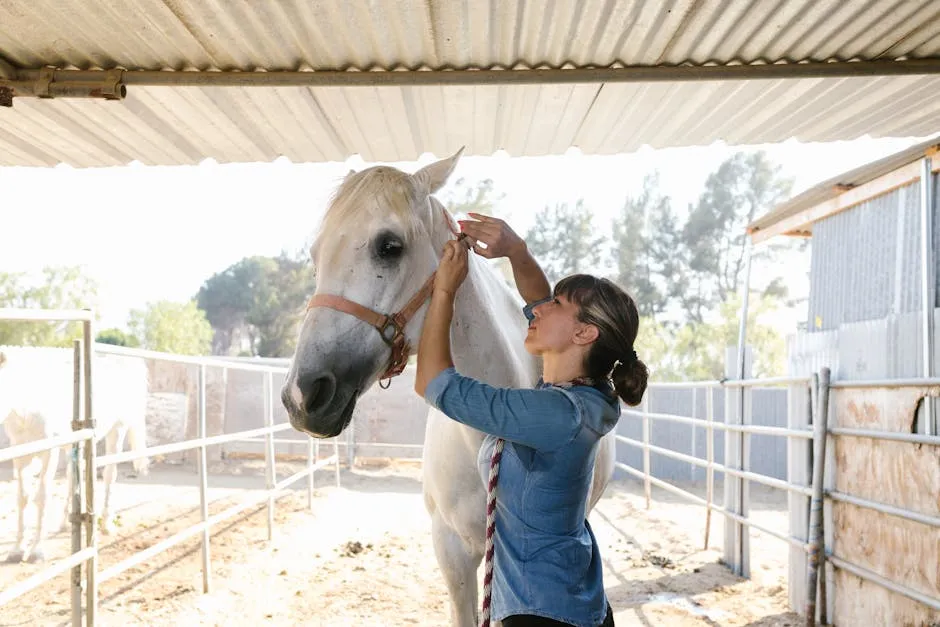Introduction
Horse betting is more than just a gamble; it’s a thrilling blend of strategy, excitement, and a touch of luck. Millions worldwide tune in to see which magnificent steed crosses the finish line first, and many of them are placing bets. The allure of victory, combined with the chance to win some cash, makes horse racing a beloved pastime and a booming industry.
Understanding horse betting statistics is crucial for bettors seeking to make informed decisions. Statistics are the backbone of betting strategies, offering insights that can turn a hunch into a well-calculated wager. Whether you’re a seasoned bettor or a curious newcomer, mastering these numbers can significantly enhance your betting experience.
In this article, we’ll cover essential statistics, industry trends, and how to leverage this data for success. We’ll explore various types of horse racing stats, from win rates and speed figures to the impact of track conditions. Ready to saddle up and dive into the world of horse betting statistics? Let’s go!
Understanding Horse Betting Statistics
What Are Horse Betting Statistics?
Horse betting statistics are quantitative data that reflect the performance of horses, jockeys, trainers, and races. They play a pivotal role in the betting industry, serving as a benchmark for assessing potential outcomes. These numbers include win rates, average speeds, and even conditions of the racing tracks.
By analyzing these statistics, bettors can better predict race outcomes. For example, a horse with a high win rate at a specific distance might be a smart bet in an upcoming race. Understanding these figures allows bettors to move beyond mere luck and make choices grounded in data.

To deepen your understanding of betting strategies, consider checking out Horse Racing 101: A Beginner’s Guide to Betting on Horses. This guide is perfect for those who are just starting out and want to understand the basics of betting.
Types of Horse Racing Statistics
Different types of horse racing statistics provide valuable insights into the sport. Here are some key categories to consider:
- Win Rates: This statistic shows how often a horse wins compared to the total number of races it has run. A horse with a win rate of 30% is a strong contender.
- Speed Figures: These numbers indicate how fast a horse has run in previous races. They help you compare the performances of different horses, assisting in identifying potential winners.
- Track Conditions: The state of the racetrack can significantly affect race outcomes. Analyzing past performances on various track conditions can provide clues about a horse’s adaptability.
- Jockey and Trainer Stats: The relationship between a horse and its jockey or trainer is critical. Statistics reflecting their win rates and performance history can help bettors gauge how well a horse may perform.
- Breeding Statistics: A horse’s lineage may suggest its strengths, such as preferred running distances and track types. Familiarity with a horse’s breeding history can enhance betting strategy.
By utilizing these statistics, bettors can craft a comprehensive view of each race scenario. This knowledge transforms horse racing from a game of chance into a calculated approach, increasing the likelihood of making winning bets.
Armed with this understanding, bettors can now navigate the exciting world of horse racing with confidence. The right statistics can be your secret weapon in making informed, data-driven decisions!
Key Horse Racing Statistics
General Industry Statistics
The horse racing industry is an economic powerhouse, contributing a staggering $122 billion annually to the U.S. economy. Yes, you read that right! This isn’t just a fun day at the racetrack; it’s a serious business. With 1.74 million jobs created in the sector, the impact of horse racing extends far beyond just the betting windows. From trainers to groomers, the workforce is massive and diverse.
Across the globe, the industry sees participation from millions. For instance, the U.K. enjoys a vibrant racing culture, with horse racing being the second most popular spectator sport. Each year, the equine industry generates significant revenue, supporting various equine-related activities from breeding to training. The economic ripple effect is undeniable, promoting local economies and fostering tourism, especially during major events like the Kentucky Derby and Royal Ascot.

For those looking to dive deeper into the economic aspects and strategies of horse racing, I recommend The Complete Guide to Horse Racing Betting by Richard Smith. This book provides a comprehensive look at the strategies and insights necessary for success in horse racing betting.
Winning Horse Statistics
When it comes to winning horses, speed and age matter. The average winning racehorse clocks in at an impressive 37-40 mph. Talk about a sprint! Most successful racehorses fall within the 3-5 years age range, showcasing the peak of their physical capabilities. However, don’t underestimate the older contenders; some horses can win even at the ripe age of 19!
Weight also plays a role, with the average winning horse tipping the scales around 1,100 pounds. This hefty figure isn’t just for show; it’s a testament to the power and endurance required to race. Interestingly, over 80% of these winning horses are bred specifically for racing, hinting at the importance of lineage in this sport. Training regimens are equally rigorous, with horses typically trained for around four hours a day.

If you’re serious about making informed bets, consider adding Horse Racing Statistics and Trends: A Comprehensive Analysis to your reading list. This book dives deep into the numbers and what they really mean for your betting strategy.
Trainer and Jockey Statistics
Behind every winning horse is a dedicated trainer and a skilled jockey. The best trainers have a proven track record, often managing 30-50 horses at any given time. Statistics show that trainers with over 20 years of experience boast higher winning percentages. This isn’t just luck; it’s a mix of skill, knowledge, and a few secret sauces!
Jockeys are no less impressive. The highest-earning jockey has amassed over $400 million in prize money, a staggering figure that illustrates the potential financial rewards in the sport. On average, a jockey weighs between 115-120 pounds, which is crucial for maintaining the speed and agility needed on race day.
Win rates tell another story. The top jockeys often exceed win rates of 20%, making them the real stars of the show. With thousands of races each year, the competition is fierce, and only the best rise to the top.

Race Track Statistics
Race track conditions can dramatically influence the outcome of races. The average horse racing track is about 1 mile long, but track surfaces vary from grass to dirt, affecting speed and performance. Interestingly, around 60% of races are held on grass tracks, which can favor different horse types and running styles.
Globally, there are over 300 horse racing tracks, each with its own unique characteristics. Geographic distribution matters, too; certain regions are known for specific types of racing, such as thoroughbred or harness racing. Understanding these nuances can provide bettors with critical insights into how conditions may affect race outcomes.
In summary, horse racing is a rich tapestry of statistics that can guide bettors in making informed decisions. From the industry’s economic impact to the specifics of winning horses, trainers, jockeys, and race tracks, knowledge is power in the thrilling world of horse betting. So, the next time you place a bet, remember the stats behind the spectacle!

Betting Statistics
Global Betting Trends
The horse betting market is galloping ahead! Valued at $44.3 billion in 2022, it’s projected to reach a whopping $91.2 billion by 2032. That’s a CAGR of 7.6%! What’s driving this surge? Increased media coverage, online platforms, and a growing audience are all contributing factors.
Now, let’s break down the types of bets. Single bets, which are simple and straightforward, accounted for 50.1% of the market share in 2022. These bets attract those seeking a quick thrill. On the flip side, multiple bets, also known as exotic bets, are gaining traction. They allow bettors to combine selections, increasing potential payouts but also the complexity. While single bets remain popular, the allure of bigger wins in multiple bets is turning heads.
Interestingly, 85% of horse racing bets are placed on-site at racetracks, but the online segment is growing rapidly. With more platforms emerging, bettors now have the luxury of wagering from their sofas. This hybrid landscape of betting shows a shift in how enthusiasts engage with the sport.

For a deeper understanding of betting strategies, consider reading Horse Racing: The Ultimate Guide to Winning Bets. This guide will help you develop a winning mindset and approach to betting.
Pari-Mutuel Betting System
Let’s talk about the pari-mutuel betting system. This unique setup is the backbone of horse racing bets. Unlike traditional betting, where you go against a bookmaker, in pari-mutuel betting, all bets go into a pool. After taking a cut for the house, the remaining money is distributed among the winners. This system adds excitement and makes every race feel like a fair game.
In 2022, over 75% of horse racing bets were placed using this system. The average payout is around 80% of the total pool, making it a compelling option for many bettors. The commission taken by racetracks usually hovers between 15-20%, which is quite reasonable given the thrill it provides. From win, place, show to more complex bets like exactas and trifectas, this system caters to all types of bettors.
Betting Behavior Analysis
Now, let’s dive into the fascinating world of bettor demographics and behaviors. An intriguing statistic reveals that 79% of adults in the U.S. never bet on horse racing. However, for the brave souls willing to take the plunge, 4% place bets at least once a week. This stark contrast highlights the niche nature of the betting community.
So, who are these bettors? Many are seasoned enthusiasts, often wagering amounts ranging from $50 to $200 per event. The rise of online platforms has significantly impacted traditional betting methods. Bettors now enjoy increased convenience and accessibility, leading to a broader audience. This digital shift allows for real-time information and faster transactions, making betting more attractive than ever.
Moreover, with the growing acceptance of gambling in society, we see more casual bettors joining the fray. They might not know the ins and outs of horse racing, but the thrill of placing a bet adds an exciting layer to the experience.
In conclusion, understanding these statistics can empower bettors. From knowing global trends to grasping the intricacies of betting systems and behaviors, the more informed you are, the better your chances of success. As the horse betting market continues to grow, staying updated on these trends will be crucial for anyone looking to place a winning bet!

Analyzing Betting Statistics for Success
Developing a Winning Strategy
Horse betting is not just about luck; it’s about crafting a winning strategy based on solid statistics. Start by gathering data on horses, jockeys, trainers, and race conditions. This information can help you make informed decisions.
Begin by analyzing historical data. Look for patterns in horses’ performances over time. Did a particular horse excel on specific tracks? Was there a change in jockey or trainer that led to a performance boost? Such insights can inform your bets.
Current trends are equally important. Pay attention to how horses are performing in recent races. A horse that has consistently placed well in the last few outings might be a safer bet than a one-hit-wonder from the past. Keeping an eye on these details can help you choose wisely.

To further enhance your betting strategy, consider exploring Horse Racing for Dummies by John M. McGowan. This book simplifies complex concepts and gives you the tools to effectively analyze your betting strategy.
Identifying Patterns and Insights
Recognizing patterns is essential in horse betting. Start by analyzing various statistics, such as horse performance, trainer success rates, and jockey efficacy. For example, if a trainer has a high win rate at a specific racetrack, their horses are likely well-suited to that environment.
Use techniques such as regression analysis to identify correlations. This statistical method helps you see how different factors affect outcomes. Look for trends, like which horses perform best under certain conditions or which jockeys consistently bring home wins.
Take a peek at past successful analyses. For instance, studies have shown that horses with a certain speed rating tend to perform better on specific track surfaces. This kind of statistical insight can greatly enhance your betting strategy.

The Role of Technology in Horse Betting
Technology is transforming horse betting. Artificial Intelligence (AI) is now used to analyze vast amounts of data. This allows bettors to make more informed decisions based on predictive analytics.
Mobile apps have made betting more accessible than ever. With a few taps, you can place bets and track odds in real-time. This convenience means you can stay updated with the latest statistics and trends without breaking a sweat.
Statistical tools are widely available to help bettors track performance and odds. Websites and apps provide insights into horse and jockey statistics, helping you make educated decisions. The better your tools, the sharper your strategy will be.
In conclusion, leveraging statistics, recognizing patterns, and embracing technology can elevate your horse betting game. By developing a winning strategy rooted in data, you can enhance your chances of success.

Safety and Welfare Statistics in Horse Racing
Understanding the Impact of Welfare Regulations
Horse racing is thrilling, but safety and welfare are paramount. The industry recognizes this, striving to enhance horse care standards. Statistics reveal a sobering reality: on average, two horses die on race tracks every day. This statistic highlights the necessity for robust welfare regulations to protect these magnificent athletes.
Recent years have seen a push for improved welfare measures. Stricter rules have led to a 20% decrease in horse fatalities over the last decade. This progress proves that regulations work. They ensure that horses receive proper medical attention and care, reflecting a commitment to their well-being.
Ethics play a significant role in horse racing. Over 80% of racehorse owners believe that stricter regulations enhance the sport’s integrity. This sentiment is crucial, as ethical considerations should guide every aspect of horse racing. By prioritizing the welfare of these animals, the industry can foster a safer environment for both horses and riders.

For those interested in the historical context and evolution of the sport, consider reading A History of Horse Racing in America by David Black. It provides a fascinating look at the development of this beloved sport.
Recent Changes and Their Implications
Recent changes in regulations have sparked discussions about the future of horse racing. One significant development is the implementation of anti-doping measures. These rules aim to ensure fair competition and protect the health of racehorses. With increased testing, the use of performance-enhancing drugs has declined by 60% due to stringent regulations and testing protocols.
These changes reflect a broader trend towards transparency and accountability in the industry. As racing organizations tighten their grip on drug use, they send a clear message: horse welfare is non-negotiable. This commitment to safety not only protects the horses but also reassures bettors and fans about the sport’s integrity.
Moreover, the emphasis on welfare has led to expanded resources for horse care. Many organizations are investing in research and technology to improve equine health. This forward-thinking approach ensures that horses receive the best possible care throughout their racing careers and beyond.
In conclusion, the focus on safety and welfare in horse racing is crucial for the industry’s future. By understanding the implications of welfare regulations and recent changes, stakeholders can make informed decisions that benefit both the animals and the sport. As the industry evolves, these measures will pave the way for a more ethical and sustainable future.

Conclusion
Understanding horse betting statistics is essential for savvy bettors. The statistics surrounding safety and welfare are just as significant as those related to race performance. By grasping these numbers, you enhance your ability to make informed betting decisions.
As shown, the industry is making strides in improving horse welfare. These advancements not only protect the animals but also bolster the sport’s credibility. When you place a bet, remember that you’re supporting an industry committed to the well-being of its athletes.
In the ever-evolving landscape of horse betting, staying informed is your best strategy. The more you know, the better equipped you are to navigate this thrilling world. So, take the reins and leverage the insights provided in this guide. The future of horse betting looks bright, and with the right knowledge, you can ride the wave of success!
FAQs
What are the most important statistics to consider in horse betting?
When betting on horses, focus on several key statistics. Win rates reveal how often a horse wins compared to its total races. Speed figures indicate a horse’s performance in previous races, helping you compare competitors. Track conditions also matter; they can significantly impact race outcomes. Additionally, consider jockey and trainer statistics, as their experience and success can influence a horse’s performance.
How can I find reliable horse racing statistics?
Bettors can access reliable horse racing statistics through various platforms. Websites dedicated to racing statistics, such as Timeform and RacingStats247, provide comprehensive data. Additionally, industry reports and official racing organization websites offer up-to-date information. Online betting platforms often include statistics, allowing you to analyze data before placing bets.
What is the impact of technology on horse racing statistics?
Technology is revolutionizing horse racing statistics. Data collection and analysis have become more efficient with the advent of AI and machine learning. Advanced algorithms evaluate vast amounts of data, providing insights into horse performance, track conditions, and betting trends. Mobile apps and online platforms allow bettors to access real-time statistics, enhancing their betting strategies.
Is betting on horse racing legal everywhere?
Betting on horse racing is not universally legal. Regulations vary by country and region. In the United States, for instance, horse betting is permitted in many states, but with varying rules. Always check local laws before placing bets. In some countries, online betting is more regulated, while others may have stricter prohibitions.
Please let us know what you think about our content by leaving a comment down below!
Thank you for reading till here 🙂
For more insights on betting strategies, check out our article on horse betting statistics.
All images from Pexels




